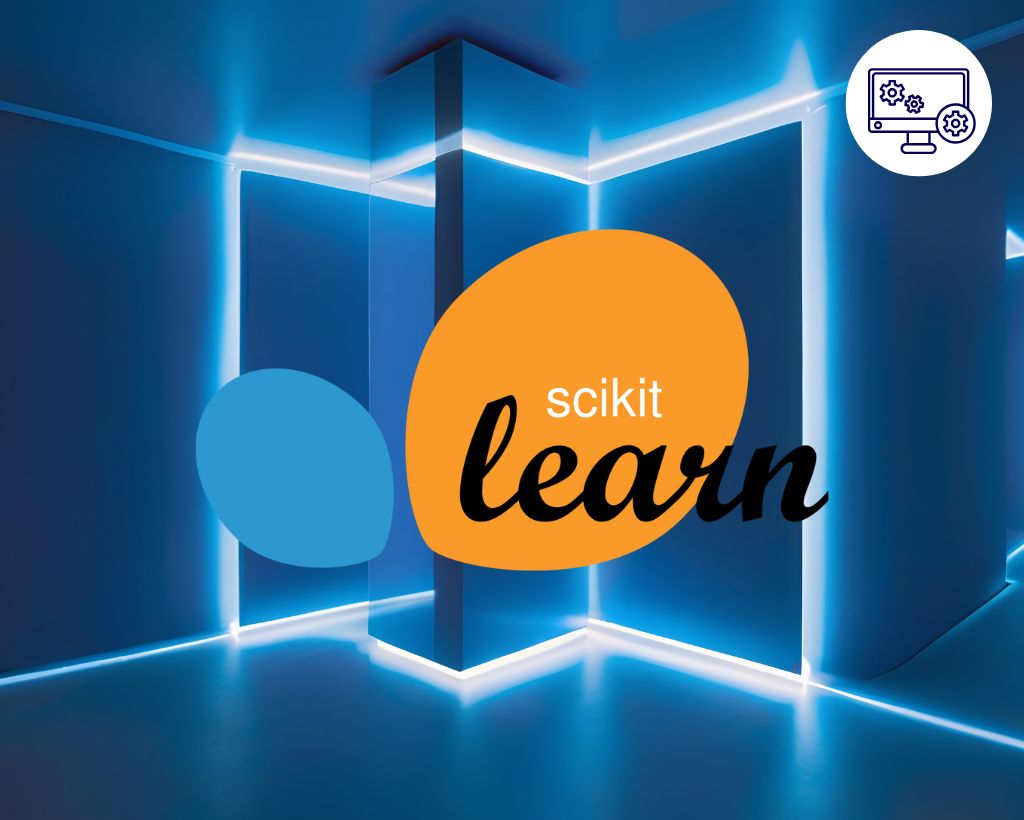
Try PlusClouds Eaglet service and find high quality B2B hot leads and opportunites with AI support.


Machine learning is creating profound changes in every area of life as one of the most exciting technologies of our time. Thanks to the algorithms developed, data is no longer just stored but transformed into entities that are interpreted, analyzed, and used to predict the future. So, what is Scikit-learn, one of the biggest aids for developers in this transformation, and why is it so important?
The answer to the question of what Scikit-learn is; Scikit-learn is an open-source library developed with the Python programming language that facilitates machine learning processes. It was initiated by David Cournapeau as a Google Summer of Code project and has rapidly expanded in scope with contributions from a large developer community. Today, Scikit-learn is actively used by millions of users worldwide.
The library includes both supervised and unsupervised learning algorithms. For example, regression models can be used to predict user purchase tendencies on an e-commerce site, classification algorithms can be used to classify emails as spam or not, and clustering algorithms can be used for customer segmentation. All these processes can be implemented with just a few lines of Python code using Scikit-learn.
Scikit-learn brings together all processes such as data preprocessing, model selection, hyperparameter tuning, and model evaluation under a single roof thanks to its modular structure. This significantly increases efficiency in machine learning projects. Especially in small and medium-sized datasets, Scikit-learn offers very high performance. Moreover, thanks to its user-friendly API, it can be easily used by both beginners and professionals.
The main advantages of Scikit-learn are:
• Consistent API: You can call different algorithms with the same syntax and effortlessly switch between models.
• Integrated tools: Tasks like model training, validation, cross-validation, and data transformation are integrated.
• Rich algorithm diversity: Many algorithms such as decision trees, k-nearest neighbors (KNN), Naive Bayes, SVM, linear and logistic regression, and PCA can be used directly.
• Comprehensive documentation: There are rich examples and official documents that support the learning process.
One of the cornerstones of data science projects is properly preprocessed data. A technical answer to the question of what Scikit-learn is includes its capabilities in data preparation. For data preprocessing and transformation, tasks such as completing missing values (SimpleImputer), converting categorical variables to numerical data (OneHotEncoder), standardization (StandardScaler), normalization, and dimensionality reduction can be easily performed thanks to Scikit-learn’s preprocessing module. You can also check our article titled What is Image Processing?.
For example, if you are developing a disease prediction model, the information of patients such as age, gender, blood pressure, and cholesterol needs to be formatted and normalized appropriately. Scikit-learn organizes these transformations into structured, repeatable pipelines. This increases both accuracy and reduces code complexity.
In machine learning, selecting the correct model is as crucial as training that model with the right parameters. Scikit-learn offers users very powerful tools for modeling and hyperparameter tuning optimization. GridSearchCV and RandomizedSearchCV help you find the best model by trying different parameter combinations.
Let’s say you want to train a Support Vector Machines (SVM) model. The correct selection of parameters such as kernel type, C value, and gamma directly affects the model's performance. At this point, you can conduct a systematic search with Scikit-learn and easily identify the combination that yields the highest performance.
To better understand what Scikit-learn is, let's provide some practical examples. For instance:
• Finance sector: Banks can use Scikit-learn to classify loan applications to separate risky and non-risky customers.
• Healthcare sector: Disease prediction systems can create models using classification algorithms for early cancer diagnosis.
• Marketing: Clustering algorithms come into play for tasks like customer segmentation, campaign targeting, and behavioral analysis.
• Education: Regression and classification methods are used in academic applications such as predicting student success and analyzing dropout risks.

While Scikit-learn works effectively on local machines, the model training time can stretch with large datasets. At this point, PlusClouds steps in with its scalable and performance-oriented infrastructures for your AI projects.
PlusClouds’ powerful GPU-supported servers, Docker container support, and automatic scaling features allow you to run your Scikit-learn projects quickly, securely, and flexibly. If you want to deploy the models you developed with Scikit-learn into production, PlusClouds’ modern DevOps and data science infrastructure solutions save you a significant amount of time. Additionally, the PlusClouds team offers technical consulting regarding the integration of your projects. For more information: PlusClouds
One aspect of the answer to the question of what Scikit-learn is, is its community support. It is in a constantly evolving and updated structure, with thousands of contributors and dozens of example projects on GitHub. Additionally, its frequent use in Kaggle competitions and academic publications highlights its reliability and widespread use.
Moreover, Scikit-learn is also suitable for working in conjunction with deep learning libraries such as TensorFlow or PyTorch. This allows for the development of hybrid solutions in complex projects. Especially for data preprocessing, feature selection, and classic modeling steps, Scikit-learn has almost become a standard choice.
What is Scikit-learn, and how can it be briefly defined?
Scikit-learn is an open-source machine learning library written in Python. It allows you to easily perform tasks such as classification, regression, clustering, and model evaluation.
In which projects can Scikit-learn be used?
Scikit-learn can be used in any field where data-driven decisions are made, such as finance, healthcare, education, marketing, and e-commerce.
Can deep learning be done with Scikit-learn?
No, Scikit-learn offers classic machine learning algorithms. Libraries such as TensorFlow or PyTorch should be preferred for deep learning. However, Scikit-learn can be used in steps like data preparation and model evaluation.
What is Scikit-learn, and why is it so widely used?
Scikit-learn is quite popular in the data science and machine learning communities due to its ease of use, rich algorithm diversity, strong documentation, and open-source structure.
Does Scikit-learn work with big data?
As Scikit-learn is an in-memory library, it may face performance issues with very large datasets. For such cases, transitioning to tools like Spark MLlib is recommended.
In conclusion, the answer to what Scikit-learn is, is not merely a Python library. This tool has become an indispensable cornerstone for a wide range of users, from those wanting to enter the fields of data science and machine learning to experts developing projects at a professional level. Thanks to its modular structure, user-friendly interface, rich algorithm diversity, and strong community support, it enables machine learning processes to be carried out both efficiently and sustainably.
Today, whether analyzing customer behaviors on an e-commerce site, establishing diagnostic support systems in a hospital, or predicting credit risk in a bank, Scikit-learn offers a powerful and accessible solution for real-world projects. Its comprehensive documentation and examples make it an easy-to-learn yet highly potent tool, especially for those in the learning process.
Additionally, integrating libraries like Scikit-learn with high-performance infrastructures to make them production-ready directly increases the scalability of projects. At this point, you can ensure that your projects stand on solid foundations in the real world with the infrastructure and support services that PlusClouds provides.
Ultimately, for anyone curious about what Scikit-learn is, this library serves as a key that makes machine learning accessible, fast, and effective. In both academic studies and industrial applications, the path to success often lies in selecting the right tool. In this sense, Scikit-learn is one of the strongest and most reliable companions in the Python ecosystem.